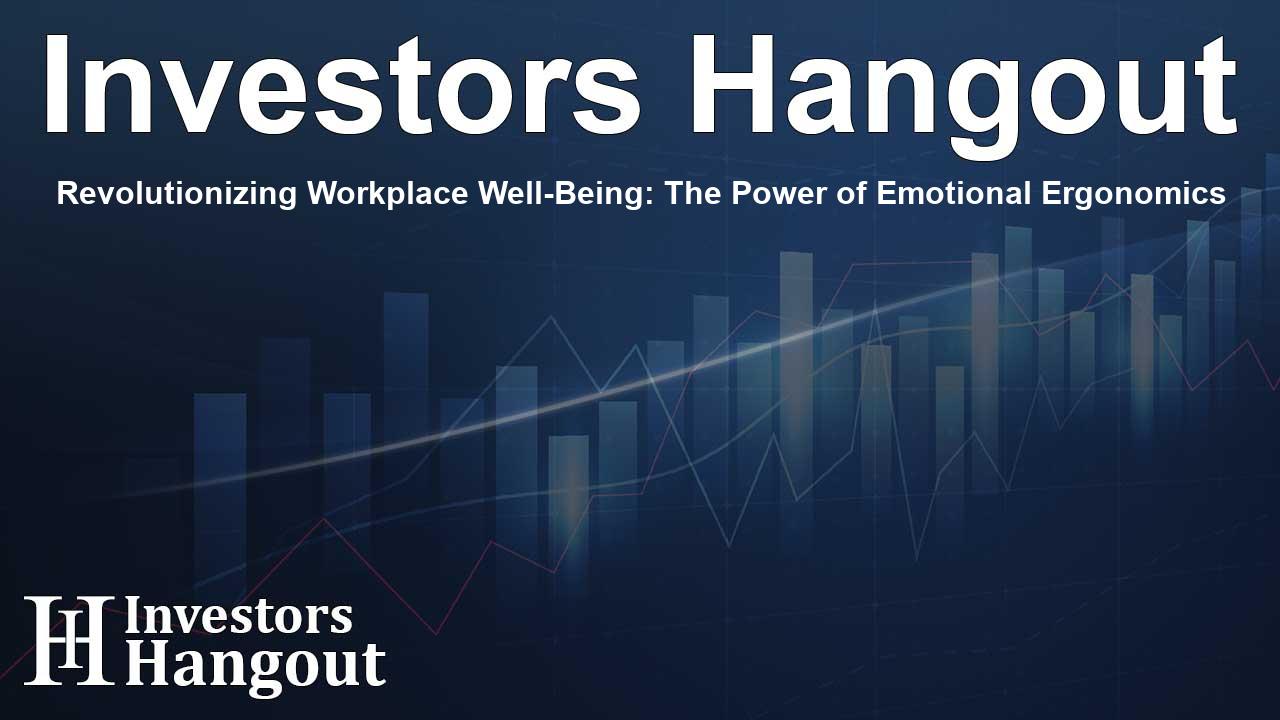Revolutionizing Workplace Well-Being: The Power of Emotional Ergonomics

Understanding Emotional Ergonomics
Emotional ergonomics is a pioneering concept that explores the intricate relationship between physical ergonomics, chronic pain, and mental health in the workplace. The modern work environment is not solely about physical safety; it is also about nurturing an employee’s mental well-being. This perspective has become increasingly crucial as organizations aim to enhance both productivity and worker satisfaction.
The Link Between Physical Health and Mental Well-Being
Chronic pain affects millions of workers globally, and research indicates that individuals suffering from ongoing discomfort have a higher likelihood of experiencing mental health challenges such as anxiety and depression. Addressing only the physical aspects of safety can lead to gaps in overall health strategies. Thus, organizations need to recognize that mental health is intertwined with physical well-being for optimal worker performance.
Workplace Injuries and Mental Health
The reality of workplace injuries goes beyond just physical ailments. High job demands, inadequate ergonomic assessments, and insufficient social support contribute significantly to employee burnout and disengagement. Workplaces that fail to consider these factors often see increased absenteeism and decreased job satisfaction. Hence, creating a supportive work environment is necessary for holistic employee health.
Innovative Solutions and Recommendations
Organizations can benefit from incorporating technology into their health initiatives. Cutting-edge solutions like AI-driven health monitoring and predictive analytics offer new ways to identify and mitigate health risks, thus fostering a more adaptive work environment. Employers are encouraged to implement comprehensive ergonomic assessments and enhance mental health support programs.
Quotes from Industry Experts
Dr. Sally Spencer-Thomas, Co-Chair of the Workplace Special Interest Group at an international association, emphasizes, "Emotional ergonomics bridges the gap between physical safety and mental resilience, ensuring that employee health is not just a compliance checkbox but a business imperative." Her insights illustrate the growing recognition of emotional well-being as a fundamental component of workplace safety.
Kevin Lombardo, CEO of a prominent ergonomics company, highlights the importance of integrating emotional well-being into workplace strategies: "Addressing industrial ergonomics without considering emotional wellbeing is an incomplete strategy." His vision reflects a transformative approach to workplace health, urging companies to combine physical and emotional well-being for effective injury prevention.
Furthermore, Dr. Dani Kimlinger from MINES and Associates shares, "By integrating emotional ergonomics with Employee Assistance Programs, organizations can cultivate an environment where resilience and belonging are fostered." This perspective underscores the necessity for organizations to not only prioritize physical injury prevention but also support their employees’ mental health journeys.
Actionable Steps Towards a Healthier Workplace
The recent findings call for organizations to adopt a multifaceted approach toward workplace well-being. Recommendations include conducting thorough ergonomic evaluations, enhancing support programs focused on mental health, and utilizing emerging technologies for proactive health management. By encouraging open discussions about emotional health and equipping teams with resources, companies can support a healthier, more engaged workforce.
To further delve into these insights and explore practical applications, employees and employers alike are encouraged to access a recent white paper titled "Emotional Ergonomics: How the Intersection of Industrial Ergonomics, Pain, and Mental Health Shapes Worker Well-Being." This rich resource provides an in-depth analysis of this essential topic.
Frequently Asked Questions
What is emotional ergonomics?
Emotional ergonomics refers to the integration of physical ergonomics and mental health practices in the workplace, focusing on creating a safe and supportive environment for all employees.
How does chronic pain affect mental health?
Chronic pain can significantly impact mental health, often leading to higher rates of anxiety and depression among affected individuals.
Why is workplace mental health important?
A healthy workplace not only improves employee well-being but also enhances productivity, reduces absenteeism, and fosters a collaborative environment.
What technology can improve workplace well-being?
Innovations such as AI-driven health monitoring and predictive analytics can assist organizations in managing both physical and mental health risks effectively.
How can companies support employees' emotional well-being?
Companies can implement support programs, encourage open dialogue about mental health, and provide access to resources like Employee Assistance Programs to promote emotional well-being.
About The Author
Contact Henry Turner privately here. Or send an email with ATTN: Henry Turner as the subject to contact@investorshangout.com.
About Investors Hangout
Investors Hangout is a leading online stock forum for financial discussion and learning, offering a wide range of free tools and resources. It draws in traders of all levels, who exchange market knowledge, investigate trading tactics, and keep an eye on industry developments in real time. Featuring financial articles, stock message boards, quotes, charts, company profiles, and live news updates. Through cooperative learning and a wealth of informational resources, it helps users from novices creating their first portfolios to experts honing their techniques. Join Investors Hangout today: https://investorshangout.com/
The content of this article is based on factual, publicly available information and does not represent legal, financial, or investment advice. Investors Hangout does not offer financial advice, and the author is not a licensed financial advisor. Consult a qualified advisor before making any financial or investment decisions based on this article. This article should not be considered advice to purchase, sell, or hold any securities or other investments. If any of the material provided here is inaccurate, please contact us for corrections.
